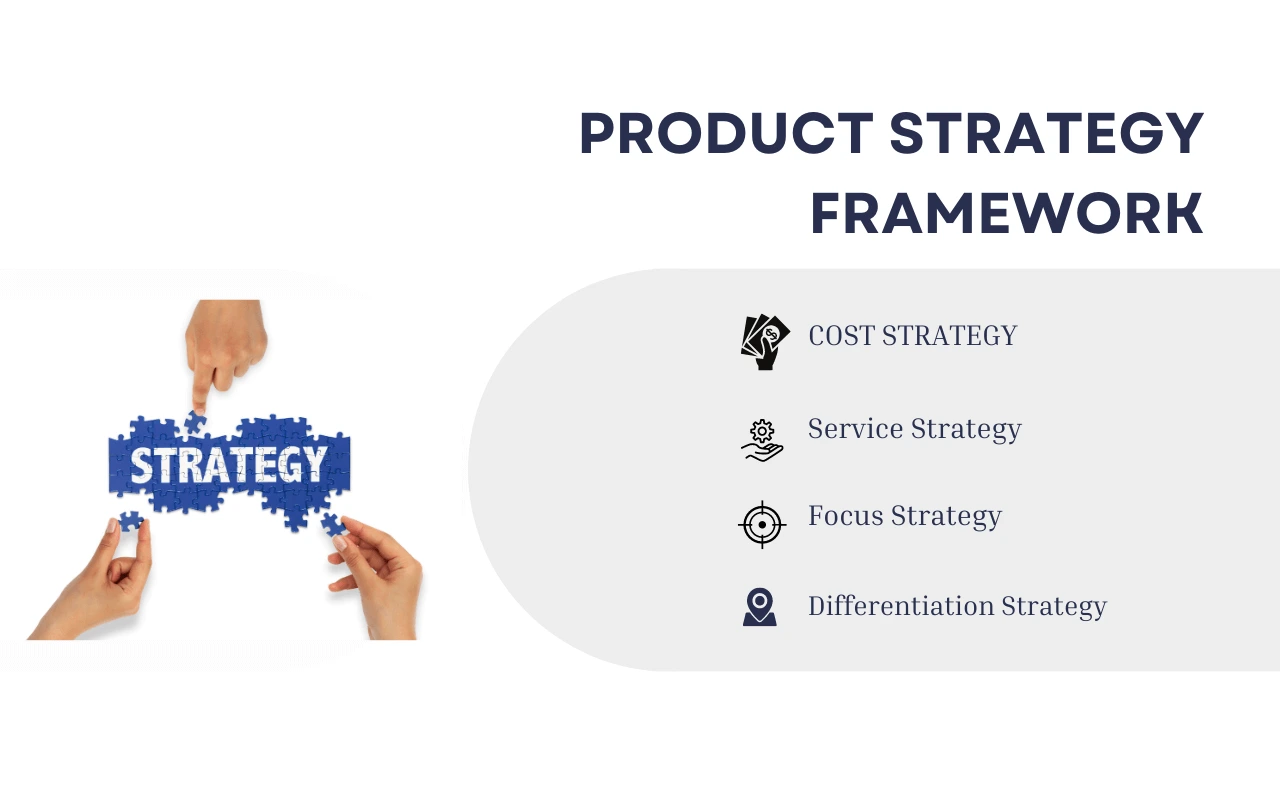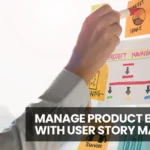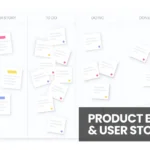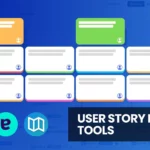Table of Contents
What is a Product Strategy Framework? Types, Elements, & Examples
The market’s physical and digital product strategies have pushed the development process to its absolute limit. Since the release of the original iPhone or Facebook versions, it has been a blink of an eye. Furthermore, some businesses can provide a variety of excellent products. But how do they manage it? An efficient product strategy framework that attracts potential clients, keeps the devoted ones satisfied, and brings them back repeatedly is one of the many tools in their toolbox.
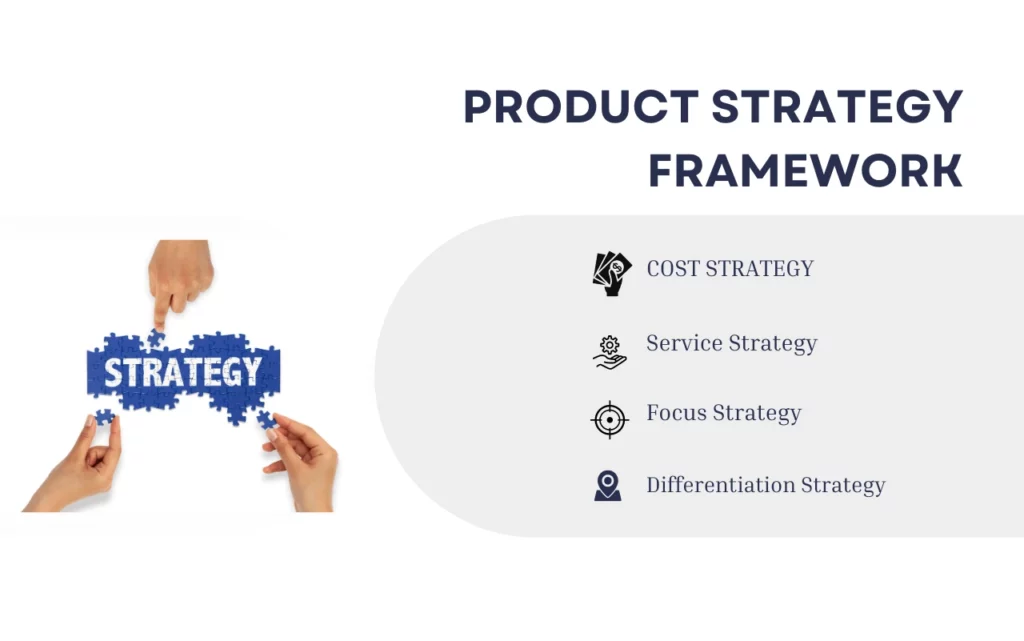
Product Strategy Framework
Have you ever wondered what a Product Strategy Framework is? Have you ever wondered if it’s important to have one? If you’re a product manager, the answer to both questions is a resounding “yes.”
What is a product strategy framework?
A product strategy framework is a set of principles and criteria that help you think through your product strategy. It gives you a common language to discuss the most important questions in building products.
A good product strategy framework should let the product team answer questions like:
- What are the key areas where our customers are having problems?
- What are the key ways that our product can solve those problems?
- What features and capabilities do we need to build to deliver these solutions?
What are the four types of product strategies?
The four types of product strategies are:
Cost Strategy
A cost strategy is a low-cost approach to gaining market share. This can be accomplished through outsourcing, maximizing economies of scale, and reducing overhead expenses. A cost strategy aims to gain market share by offering lower prices than competitors.
Service Strategy
A service strategy focuses on providing excellent customer service and superior after-sale service. This might include free shipping, free returns, and 24/7 customer support. A service strategy aims to create loyal customers who will keep returning for more.
Focus Strategy
A focus strategy focuses on one aspect of your product line or one type of customer segment that you believe will be profitable for your business in the long run. A focus strategy involves narrowing your product line, so fewer SKUs (stock-keeping units) are available for sale. As a result, there is less inventory risk and complexity in managing inventory levels within the organization.
Differentiation Strategy
With this strategy, a company tries to differentiate its products from the other products in its industry by providing unique features or benefits that set it apart from the competition. The goal of differentiation is to make a product stand out from other similar products on the market.
What are the elements of a product strategy?
Product strategy consists of three elements:
Product Initiatives – This is the “what” of your product strategy. It’s what you’re going to build and why. It usually includes a list of features and functionalities you want to deliver in a particular time frame.
Product Goals – This is the “why” of your product strategy. It’s based on the market opportunity and competitive landscape, so it’s different for every company.
Market Vision – The market conditions that will impact your product initiatives, such as competitive pressures or customer needs. You should also consider what opportunities exist for growth within this market.
Product Strategy Examples
Here are some product strategy examples and the companies behind them:
Apple – Be a Market Leader
Apple has been a market leader since it launched the iPhone.
The company has successfully created high-quality products and services that are easy to use.
Apple’s success can be attributed to its focus on developing innovative products and services. The company has also maintained its high standards by ensuring that all of its products are designed with the user’s experience in mind.
Google – Focus on Market Need
The market needs to be able to find what they’re looking for online, and people need to be able to use that information in their lives. Google provides both of those things — and the company does it better than anyone else.
Google’s strategy is to focus on what people want and need rather than trying to make money off of ad clicks or selling information about users’ behaviors. By focusing on user needs, Google has been able to offer services like Google Maps and Gmail for free (as part of their mission to organize all the world’s information).
Tips for a Successful Product Strategy Framework
If you’re struggling with your product strategy, try these tips:
Identify a product to challenge
If you’re going to spend time developing a strategy for your product, you had better have something to work with. The best way to do this is by identifying a product that you want to challenge in some way — whether it’s more feature-rich or more user-friendly than your current offering.
Focus on Your Market
Think about improving it while addressing your current audience’s needs. This will help keep your goals clear and focused while keeping them realistic at the same time.
Know the Pain Points and Vision
Once you’ve identified how you want to improve upon your competitor’s offering and what kind of customer experience your product should provide, it should be easier for you to figure out what pain points or challenges they face when using their existing solution versus yours (and vice versa).
Create a product roadmap
Your product strategy roadmap should include information about what features will be developed, when, and their priority level. You can use tools like Jira Software to create your product roadmap.
Rinse and repeat
Once you’ve created your first release plan, go back through it with the team and identify areas where you think more detail is needed or where additional research needs to occur before starting work on new features or bug fixes. Then, rinse and repeat the process until all necessary details are added to the release plan.
Final Words
There’s a lot to consider when working through a product strategy, and having a plan in place can come in handy. A product strategy framework can help you make good decisions by providing context, structure, and guiding principles for moving forward with your product.
Using the Agile story map and roadmap templates, you organize your product backlog grooming and develop your release plan for every iteration or release.

